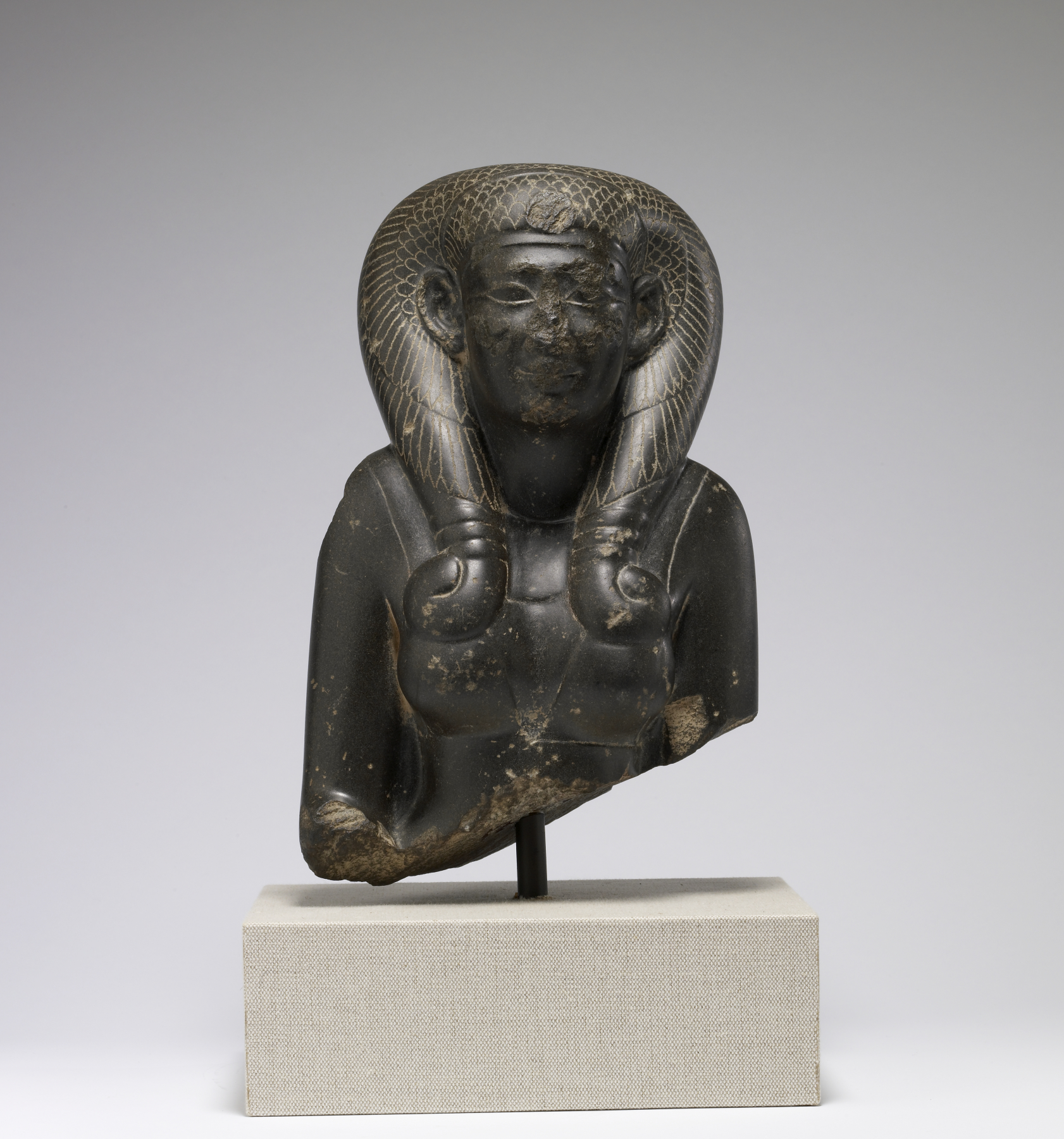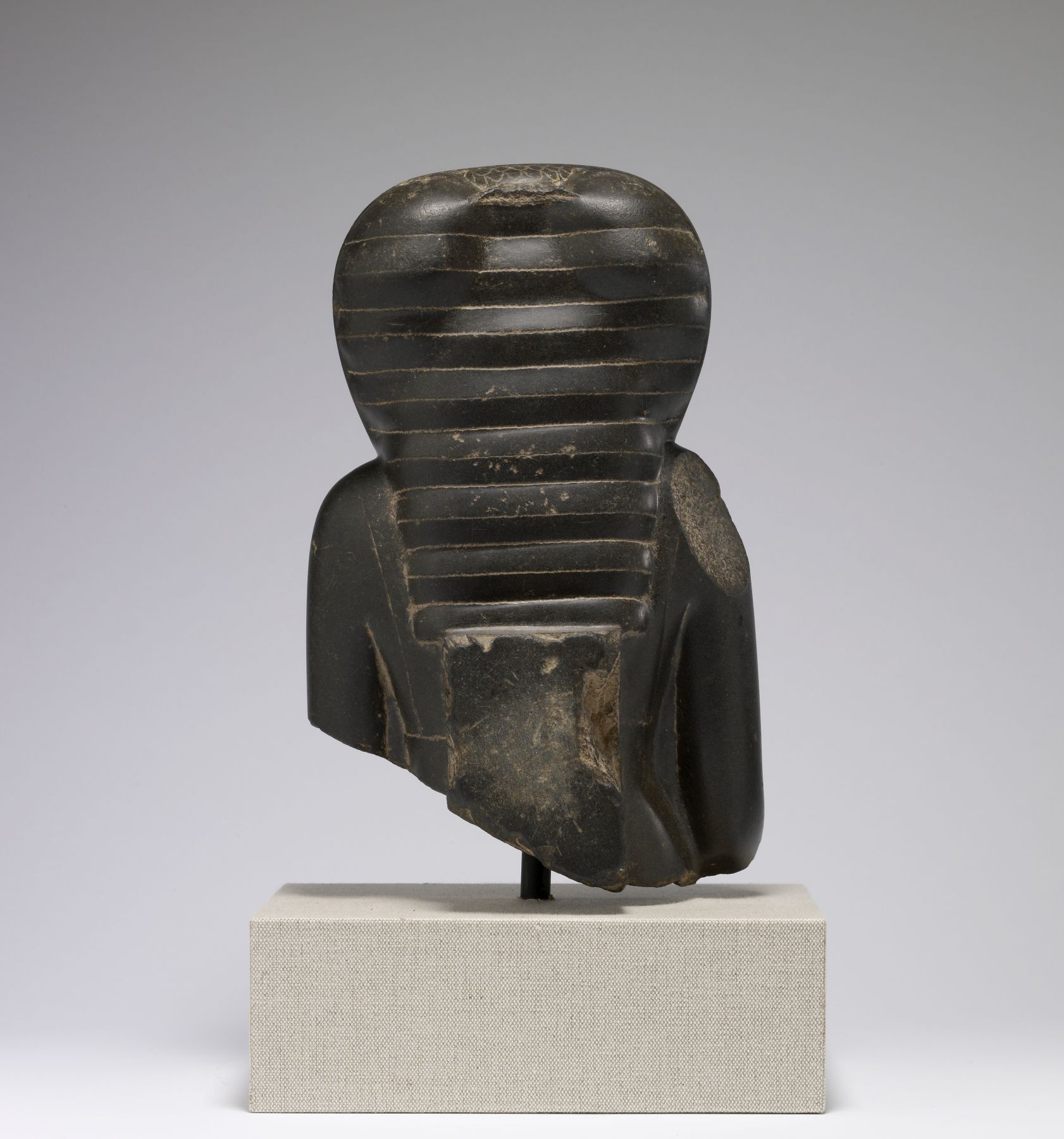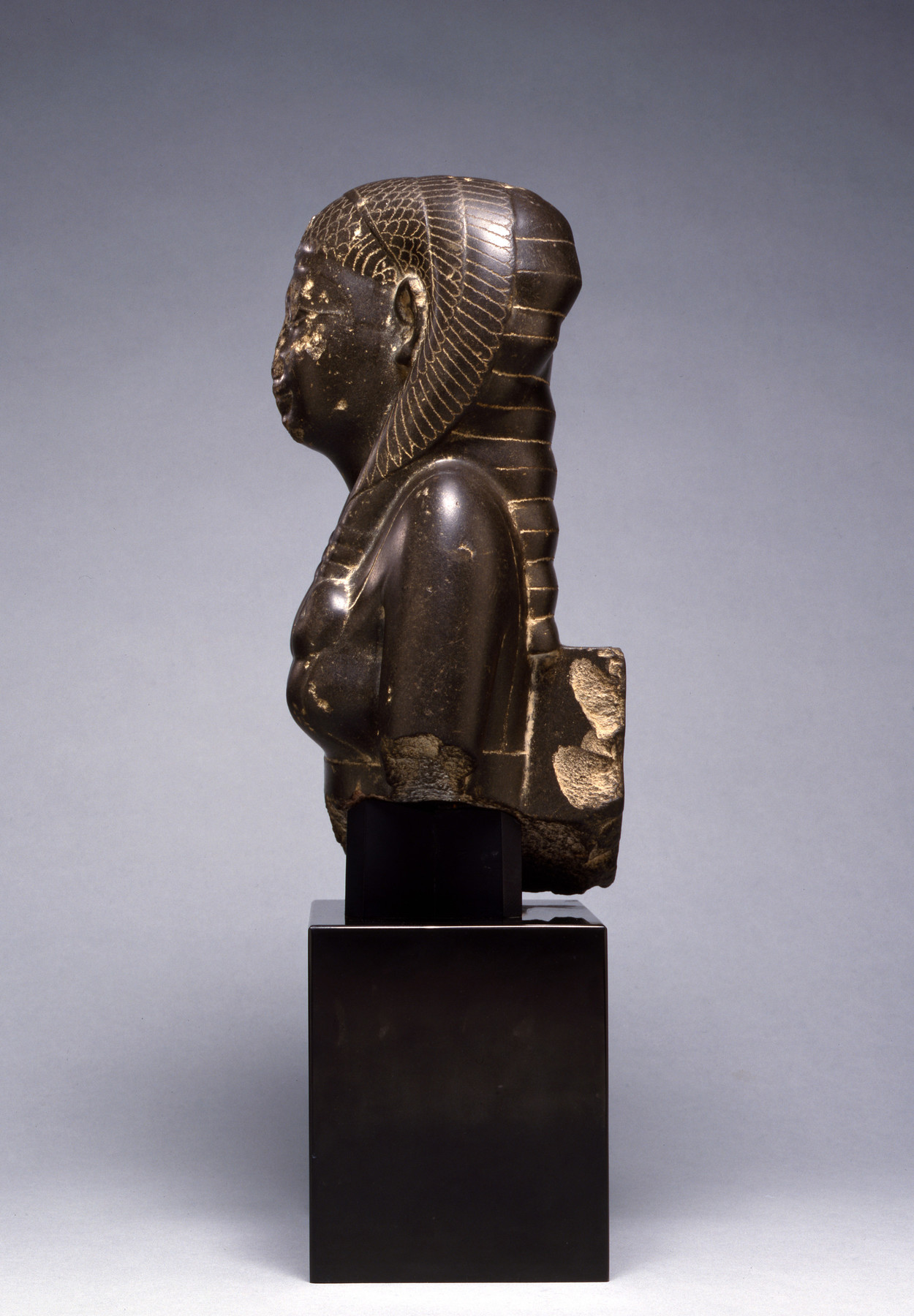Bust of a Queen Wearing Royal Headdress
(Ancient Egypt and Nubia )
This was once part of a statue showing a seated queen wearing the vulture headdress associated with queens as well as goddesses such as Isis and Hathor. The 30th Dynasty saw the revival of Middle Kingdom motifs, such as the wig with large curls and the large ears. Late Period details include the fleshy face, the slight smile, and the long cosmetic lines of the eyes and brows.
Provenance
Provenance (from the French provenir, 'to come from/forth') is the chronology of the ownership, custody, or location of a historical object. Learn more about provenance at the Walters.
Dikran Kelekian, New York and Paris, [date and mode of acquisition unknown]; Henry Walters, Baltimore, 1925, by purchase; Walters Art Museum, 1931, by bequest.
Exhibitions
| 1996-1997 | Mistress of House Mistress of Heaven: Women in Ancient Egypt. Cincinnati Art Museum, Cincinnati; Brooklyn Museum, Brooklyn. |
Conservation
| Date | Description | Narrative |
|---|---|---|
| 6/24/1971 | Treatment | cleaned |
| 10/4/1971 | Treatment | mounted |
| 4/17/1995 | Loan Consideration | examined for loan |
| 10/15/1998 | Examination | survey |
| 6/1/2000 | Treatment | cleaned; sealed; loss-compensation; other |
Geographies
Egypt (Place of Origin)
Measurements
17 11/16 x 8 1/4 x 5 7/16 in. (45 x 21 x 13.8 cm)
Credit Line
Acquired by Henry Walters, 1925
Location in Museum
Accession Number
In libraries, galleries, museums, and archives, an accession number is a unique identifier assigned to each object in the collection.
In libraries, galleries, museums, and archives, an accession number is a unique identifier assigned to each object in the collection.
22.405






